
Review on 📦 Highly Efficient Digital Postal Shipping Postage Bench Scales - Up to 35 lbs by Jay Elmo

No complaints - postal scales
I didn't expect much for this price. The first thing I did when I got this scale was run it through some accuracy and repeatability tests. I was surprised at how well he did. I tested it first with a 300g calibration weight, the scale read 300.0g (10.6 oz). Straight to the money. I noticed that the readings varied slightly (+/- 0.1g) depending on where the weight was on the scale platform and whether the "envelope holder" was up. This shouldn't be a problem for most packages, but for small/light items, make sure they are facing the center of the platform with the envelope holder underneath. ounce in increments of 0 to 22 US fl oz. Again, the scales were slightly within a tolerance of +/- 0.1 oz for the entire data set. 22 fl oz indicates 23.0 av oz on the scale. (The density of water is 1.043 eq oz per fl oz. The actual weight of 22 fl oz should be 22.94 AU oz.) By no means exhaustive testing (I only used about 4% of this scale's range), but it I was given enough confidence. Trust him for delivery. Very happy with this purchase! PS - A note on the calibration feature of this scale. First a little background. All digital scales work by interpreting the output of one or more "load cells". A load cell is a special sensor that accepts a voltage (e.g. 10V) and returns a voltage proportional to the pressure (i.e. weight) it sees (e.g. 0-10V). In order to correctly interpret these voltages, you must "calibrate" the sensor with several known weights. Using known weights gives you a range of data related to tension and weight, e.g. {(0.012V, 0lb), (1.428V, 5lb), (4.286V, 15lb), etc.}. You fit the line to that data, and the slope and intercept of that line become the calibration parameters. Later, when someone asks you how much something weighs, plug the load cell output voltage into your equation and give the calculated weight. A calibration process that uses many different weights produces many different data points and gives you more confidence that your calibration is correct across your weight range. To calibrate this scale, turn it on by pressing and holding the button combination. You will be prompted to enter the known weight of the item you will be using and then asked to place it on the scale's platform. After a few seconds, a message will appear that calibration is complete. So what is he doing? To calibrate the load cell, we need the slope and intercept (in this case it's really just the slope because the scale recalculates the intercept on each pass). You need at least two points to define a line. When the scale begins, it is assumed that there is nothing on the platform. Thus, the initial load cell voltage reading is one data point (0.xxx V, 0 lbs). You provide your object with a second data point that calculates the slope of the corresponding straight line and saves it as a calibration parameter. Not particularly reliable or ideal, but effective. Much more than you would expect from a scale at this price! So it is worth paying attention to the following points. If you MUST calibrate the scale, do so using a known weight that is representative of the items being weighed (because this is the only point guaranteed to be hit). When finished, check the calibration with various known weights to ensure the calculated slope correctly represents the Tension->Weight line for the desired weight range. A NOTICE. I DON'T NEED TO CALIBRATE MY SCALE. . It was good out of the box. They are likely using a more robust factory calibration method (using multiple weights), so calibrating at home (using a single weight method) can actually reduce the overall accuracy of the 0-35lb range. I would not recommend unnecessarily recalibrating your scale. Although it's nice to have it as an option.
- Delivers a pleasant feeling
- Negative impression
New products
Comments (0)
Top products in 🖇️ Other Office Equipment
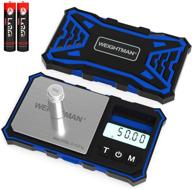
📏 Weightman Digital Pocket Scale 200 x 0.01g: Compact and Accurate Gram Scale with Calibration Weight, Jewelry Scale with 6 Conversion Units, Auto-off, and Easy Tare (Battery Included)

10 Review
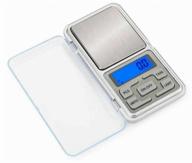
📏 Premium High-Precision Electronic Jewelry Scale MG-100 (0.01g to 100g)

10 Review

📄 VidaTeco 14-Sheet Cross-Cut Paper Shredder with US Patented Cutter - Powerful and Jam-Proof, Shreds Cards/CDs, Ideal for Home Office - 6.6-Gallon Basket (ETL Certified)

9 Review
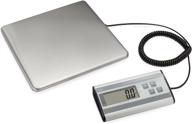
📦 Smart Weigh Digital Heavy Duty Shipping and Postal Scale: 440-lb Capacity, Stainless Steel Platform, Readability 6 oz - Perfect for UPS, USPS, Post Office, and Luggage Handling

9 Review
Another interesting products
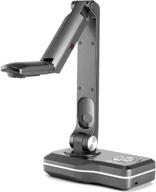
JOYUSING 8MP Document Camera for Teachers - VGA/HDMI/USB Three Mode, Mac, Windows, Chrome Compatible - Ideal for Online Teaching, Distance Learning, and Web Conferencing

3 Review

📷 CZUR Shine800-Pro: High-Speed Document Camera for Mac and Windows with OCR Function

10 Review
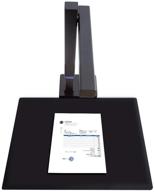
📸 CZUR Shine800-A3-Pro Professional Document Camera and Scanner with OCR Function for MacOS and Windows - Height Adjustable, Supports A3 & A4 Documents

4 Review
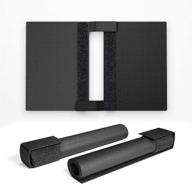
📚 CZUR Assistive Cover 13.14-inch: Splash Resistant, Adjustable Hook & Loop, PVC Material for CZUR Book Scanner - Office & Home - Black

4 Review

